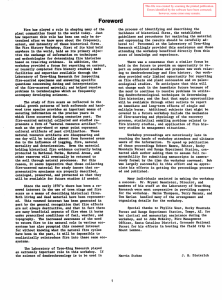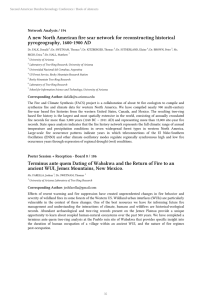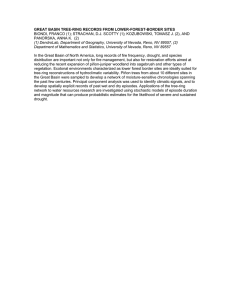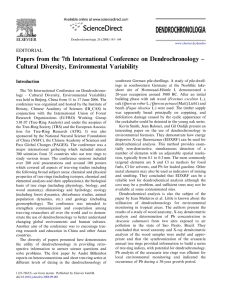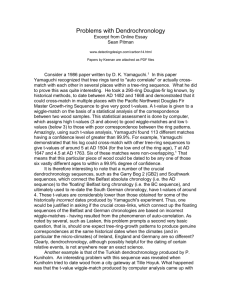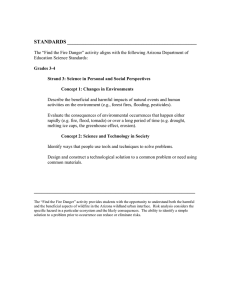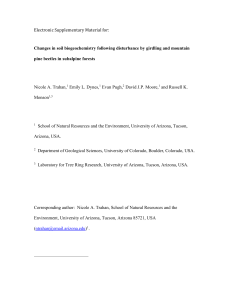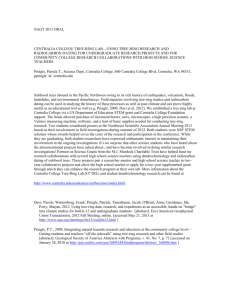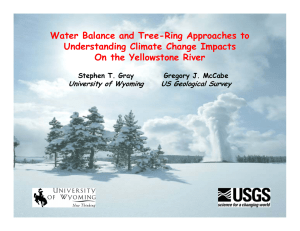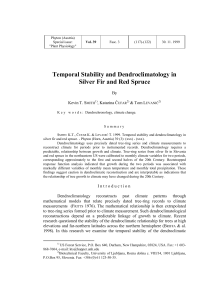External charring and fire scarring in three western conifers
advertisement
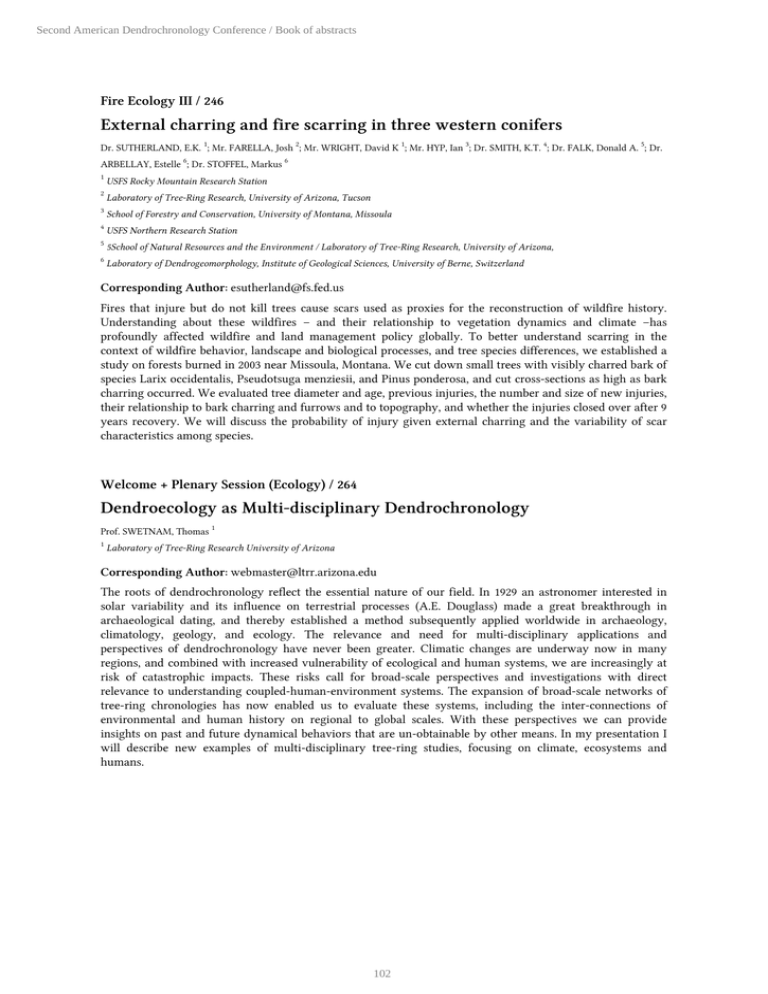
Second American Dendrochronology Conference / Book of abstracts Fire Ecology III / 246 External charring and fire scarring in three western conifers Dr. SUTHERLAND, E.K. 1; Mr. FARELLA, Josh 2; Mr. WRIGHT, David K 1; Mr. HYP, Ian 3; Dr. SMITH, K.T. 4; Dr. FALK, Donald A. 5; Dr. ARBELLAY, Estelle 6; Dr. STOFFEL, Markus 6 1 USFS Rocky Mountain Research Station 2 Laboratory of Tree-Ring Research, University of Arizona, Tucson 3 School of Forestry and Conservation, University of Montana, Missoula 4 USFS Northern Research Station 5 5School of Natural Resources and the Environment / Laboratory of Tree-Ring Research, University of Arizona, 6 Laboratory of Dendrogeomorphology, Institute of Geological Sciences, University of Berne, Switzerland Corresponding Author: esutherland@fs.fed.us Fires that injure but do not kill trees cause scars used as proxies for the reconstruction of wildfire history. Understanding about these wildfires – and their relationship to vegetation dynamics and climate –has profoundly affected wildfire and land management policy globally. To better understand scarring in the context of wildfire behavior, landscape and biological processes, and tree species differences, we established a study on forests burned in 2003 near Missoula, Montana. We cut down small trees with visibly charred bark of species Larix occidentalis, Pseudotsuga menziesii, and Pinus ponderosa, and cut cross-sections as high as bark charring occurred. We evaluated tree diameter and age, previous injuries, the number and size of new injuries, their relationship to bark charring and furrows and to topography, and whether the injuries closed over after 9 years recovery. We will discuss the probability of injury given external charring and the variability of scar characteristics among species. Welcome + Plenary Session (Ecology) / 264 Dendroecology as Multi-disciplinary Dendrochronology Prof. SWETNAM, Thomas 1 1 Laboratory of Tree-Ring Research University of Arizona Corresponding Author: webmaster@ltrr.arizona.edu The roots of dendrochronology reflect the essential nature of our field. In 1929 an astronomer interested in solar variability and its influence on terrestrial processes (A.E. Douglass) made a great breakthrough in archaeological dating, and thereby established a method subsequently applied worldwide in archaeology, climatology, geology, and ecology. The relevance and need for multi-disciplinary applications and perspectives of dendrochronology have never been greater. Climatic changes are underway now in many regions, and combined with increased vulnerability of ecological and human systems, we are increasingly at risk of catastrophic impacts. These risks call for broad-scale perspectives and investigations with direct relevance to understanding coupled-human-environment systems. The expansion of broad-scale networks of tree-ring chronologies has now enabled us to evaluate these systems, including the inter-connections of environmental and human history on regional to global scales. With these perspectives we can provide insights on past and future dynamical behaviors that are un-obtainable by other means. In my presentation I will describe new examples of multi-disciplinary tree-ring studies, focusing on climate, ecosystems and humans. 102
